David's Astronomy Pages
Cosmological Distance Ladder
Projects
Home
Page
Galaxy Groups
David's Astronomy Pages
|
Projects |
Home Page |
Galaxy Groups |
Introduction ...
See http://www.atlasoftheuniverse.com/
Back to Top
61 Cygni has a significant proper motion of [2.89 arc secs/year] (I hope to record this motion with an image taken in 1-3 years time).
| 61 Cygni (Cygnus) comprising the double star pair HIP 104214 & HIP 104217 |
| CCD Image 20s exposure, C filter 2005-09-30 21:00h UT (#95004) |
Back to Top
I visited Devon in August 1999 and witnessed the Total Solar Eclipse from a hilltop in Brixham.
Description to be added...
| Venus (69% phase Mag -4.1) | ||
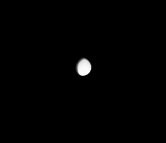
|

|
|
| CCD Image, 0.11 sec exposure, lunar filter 2004-02-19 19:27 h UT (#58044) 8" LX200 operating at f/7) |
Simulated View of Venus for 2004-02-19 (69% phase, Mag -4.1, 16.7 arc sec diameter (from TheSky) |
|
Venus
An attempt to view the 2004-06-08 Transit of Venus was made from Drumoak, Aberdeenshire, UK. Unfortunately there was cloud for the entire length of the transit and we were forced to view the Transit on Satellite TV !
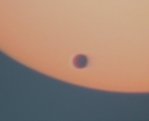
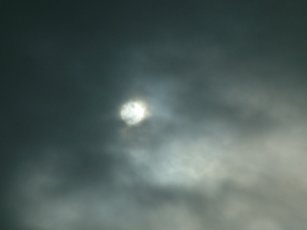
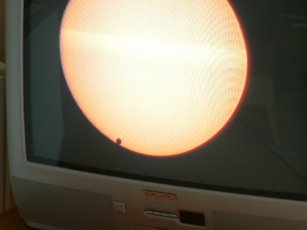
61 Cygni has a significant proper motion of [2.89 arc secs/year] (I hope to record this motion with an image taken in 1-3 years time).
| Jupiter Moons |
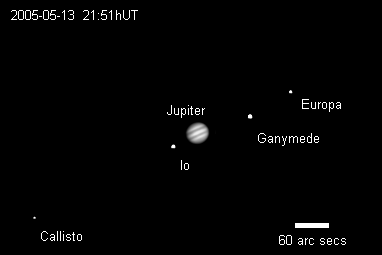
|
| Annotated CCD Image Composite Main Image : 7 x 0.11s (average combine) Jupiter Insert : 5 x 0.2s (stacked) 8" LX200 with operating at f/10.3 2005-05-13 21:51h UT (#86028-34) |
| Jupiter |
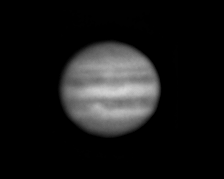
|
| 2002-03-01 23:18hUT CCD Image, 0.3 sec exposure (#18089) Heavy unsharp marking 8"/f10 SCT with Barlow |
Back to Top
| Barnard's Star, HIP 87937 (Ophiuchus) a nearby star with large proper motion, only 5.94 light years from Solar System |
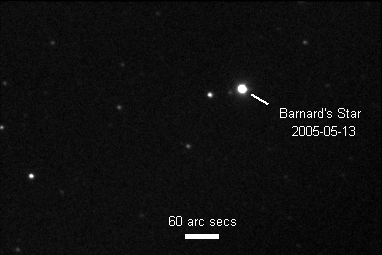
|
| CCD Image (Mag Limit +15) 3 x 60s (median combine), clear filter 2005-05-13 22:49 h UT (#86127-30) |
| Forward predictions of Barnard's Star positions over next 10 years (from TheSky, Software Bisque) |
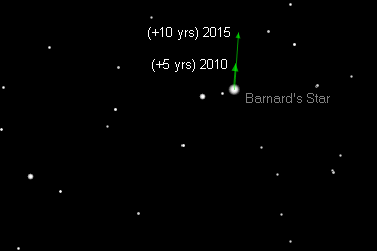
|
| Illustration based on screen capture from TheSky (Software Bisque) for 2005-05-13 |
61 Cygni has a significant proper motion of [2.89 arc secs/year] (I hope to record this motion with an image taken in 1-3 years time).
| 61 Cygni (Cygnus) comprising the double star pair HIP 104214 & HIP 104217 |
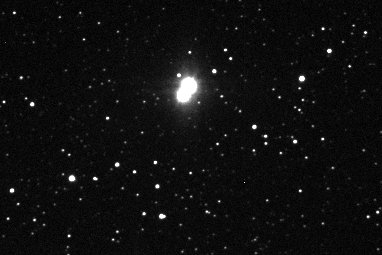
|
| CCD Image 20s exposure, C filter 2005-09-30 21:00h UT (#95004) |
| Astrometric solution of Cygni 61 at 2005-09-30 based on 19 UCAC2 stars Epoch 2000 Positions (A) HIP 104214 : RA 21h 06m 55.96s, Dec 38d 45m 16.39s (B) HIP 104217 : RA 21h 06m 57.25s, Dec 38d 44m 49.35s |
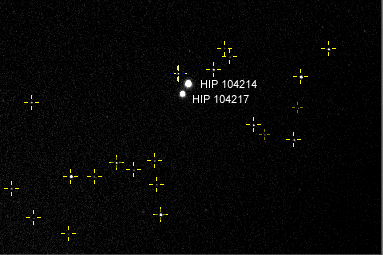
|
| CCD Image 2s exposure, V filter 2005-09-30 21:02h UT (#95007) |
Back to Top
Red dwarf binary system, located 11.7 light years from the Sun. Brightest
star is of mag +8.1 with companion star of mag +10.9
GRB 34 has a proper motion
of 2.89 arc secs/year (I hope to record this motion with an image taken in 3-5 years
time).
| WDS GRB 34 (Andromeda) |
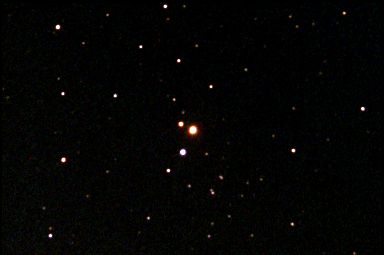
|
| CCD Colour Image Approximate Colour Red 1 min (R filter), Green 1 min (V filter), Blue 1 min (B filter) 2005-09-18 20:49h UT (#94008-12) |
| Gamma Draconis (Draco) Mag +2.2 Contrast turned up to show surrounding faint stars (mag +11 to +15) . Telescopic optical artifacts from the bright mag +2.2 star can be seen |
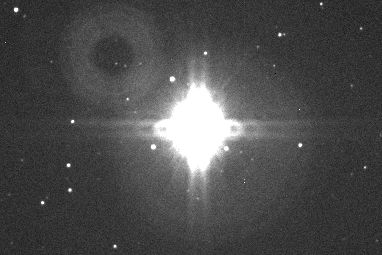
|
| CCD Image 20s exposure, C filter 2005-09-30 21:11h UT (#95019) |
| Astrometric solution of Gamma Draconis at 2005-09-30 based on 9 USNO B stars RaDec2000 Position for Gamma Draconis : RA 21h 06m 55.96s, Dec 38d 45m 16.39s |
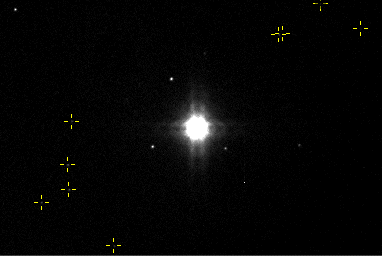
|
| CCD Image 2s exposure, C filter 2005-09-30 21:12h UT (#95020) |
Back to Top
| Mosaic of M45 (Taurus) |
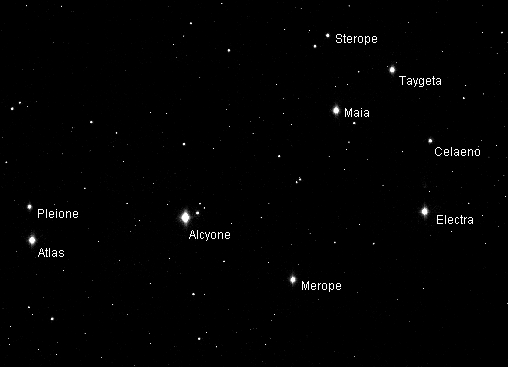
|
| Mosaic 8x9 CCD frames, 10 sec exposures taken on 2003-01-04 21:10 to 21:48h UT (#37250-321) 76 x 55 arc mins (1.25 x 0.92 arc deg) |
Back to Top
| M103 (Cassiopeia) |
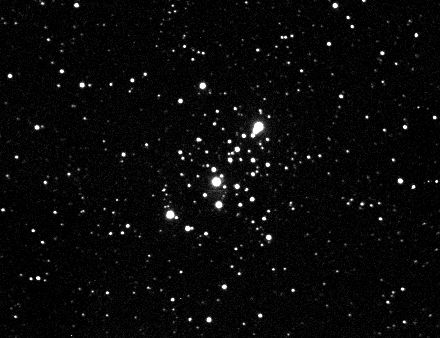
|
| Central portion of CCD Image Mosaic (3x3 frames) 20 sec exposure, C filter 2005-09-02 22:32 h UT (#93039-49) (Full Size) |
Back to Top
| M3 (Canes Venatici) |
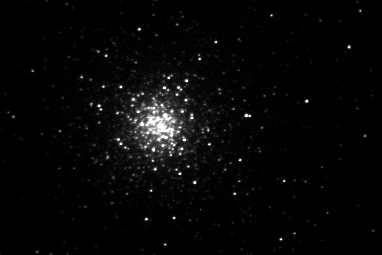
|
| 2002-04-16 21:19hUT CCD Image, 30 sec exposure 11.4 x 7.6 arc min (#21016) |
| M5 (Serpens Caput) |
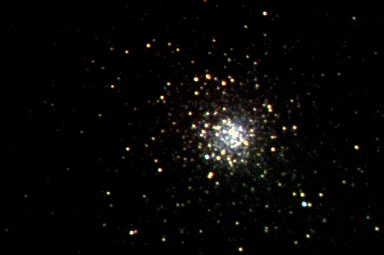
|
| CCD Colour Image (LRGB) Luminance 3x20s (average), Blue 5x30s (average) with x1.8 weighting Green 3x30s (average), Red 3x30s (average) 2005-06-10 00:46 h UT (#89034-47) |
Back to Top
| NGC 6822 (Sagittarius) Very Faint Galaxy (very low surface brightness) - hardly detectable |
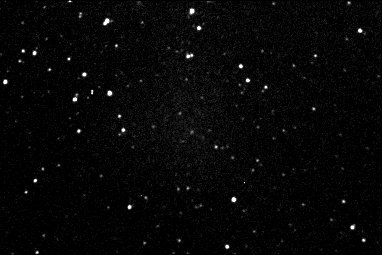
|
| CCD Image 6 x 60 sec exposure (average), clear filter 2005-08-14 22:28 h UT (#92109-14) |
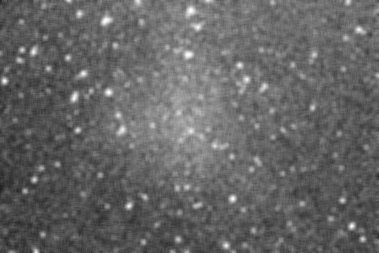
|
| CCD Image Smoothed and contrast adjusted (Image details as above) |
M31
M31 (the Andromeda Nebula) is actually a naked
eye object under clear skies and can be fairly easily detected with binoculars under
most skies.. Through an 8" LX200, the neighbouring galaxies of M32 and M110
can also be seen. The eye is only able to see the brighter nuclei of these galaxies
however.
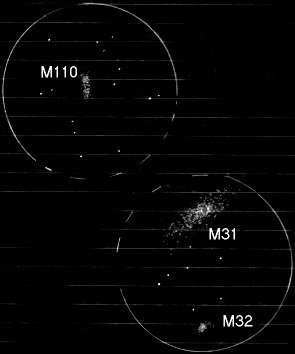 |
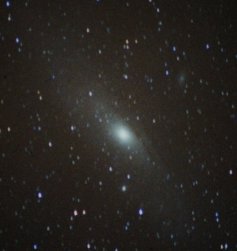
|
| M31,M32 & M110 galaxies Sketches, 1995-11-25, F10/8" LX200, 26mm, x77 Adjacent fields of view, (each 41' FOV) |
M31 Galaxy Photo, 1999-12-06 300mm f5.6, Fujicolor 200, 25 mins exposure |
Back to Top
| M65, M66 and NGC 3628 Spiral Galaxies |
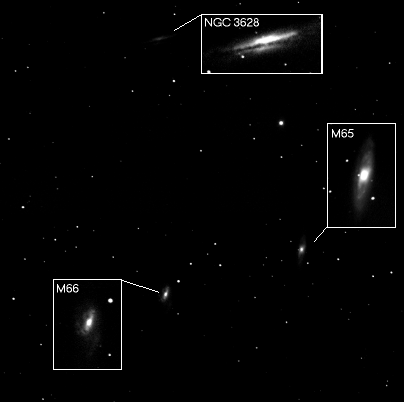
|
| Mosaic as above with longer exposure images embedded |
| M66 - False Colour (Leo) |
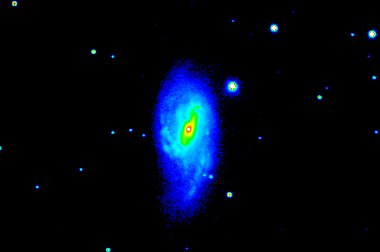
|
| CCD Image 5 x 2 min (average combine), C Filter 2004-12-11 05:42 h UT (#79010-14) |
| Same Image - Enhanced False Colour Display (Logarithmic Scaling, Range 460-3300 ADU, Inverse Spectrum) |
| MCG-1-39-3 Galaxy with Supernova 2005cf (Libra) Supernova 2005cf, Measured Magnitude : +13.5 (C), Measured Distance from host galaxy: 2' 07" UCAC 2.0 Stars : (1) mag + 13.6, (2) mag +13.3 |
||
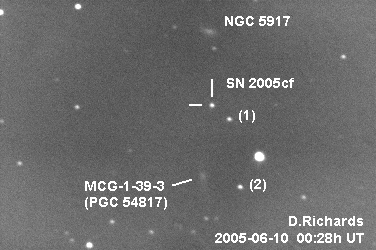
|
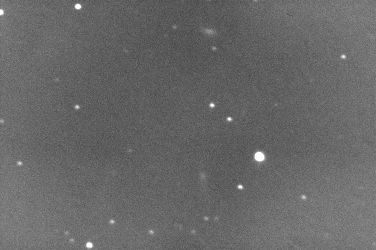
|
|
| CCD Image, 6 x 2 mins (average combine) , clear
filter 8" LX200 at f/10.3, ST-7e, CCDSoft/TheSky Twilight Conditions, Aberdeenshire, UK 2005-06-10 00:28 h UT (#89023-28) |
||
| Notes : MCG-1-39-3 catalog mag +14.7, NGC 5917
catalog mag +13.2 Supernova 2005cf was discovered by Lick Observatory Supernova Search (USA) on 2005-05-28 It is understood to be a bright Type Ia Supernova. [ See 2005cf Images at Rochester Astronomy Site ] [ See 2005cf Light Curve on SNWeb ] |
||
| Abell 426 Galaxy Group, NGC 1270 and NGC 1275 areas (Perseus) 28 galaxies in this CCD Image covering just part of Abell 426 NGC 1267 (catalog mag +13.1), NGC 1268 (catalog mag +13.8), NGC 1270 (catalog mag +13.3), NGC 1271 (catalog mag +14.2), NGC 1272 (catalog mag +12.0), PGC 12294 (catalog mag +15.5), PGC 12295 (catalog mag +15.1), PGC 12316 (catalog mag +15.7), PGC 12336 (catalog mag +16.6), PGC 12358 (catalog mag +16.7), PGC 12386 (catalog mag +16.3), PGC 2180406 (catalog mag +17.1), PGC 2181565 (catalog mag +16.2) |
|
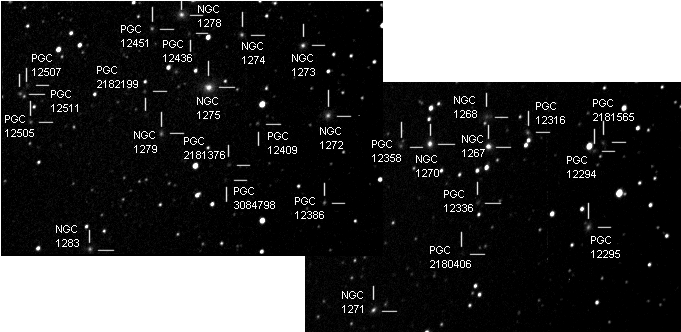
|
|
| Left CCD Image, 3 x 60s (average) , C Filter 2004-09-19 00:11h UT (#72082-84) Image |
Right CCD Image, 2 x 60s (average) , C Filter 2004-09-19 00:16h UT (#72086-87) Image |
Back to Top
| 3C 273 (Virgo) Quasar 1.9 billion light years distance from Solar System |
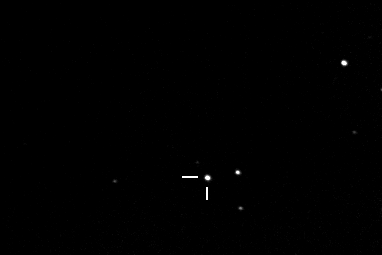
|
| CCD Image, 3 x 60s (median combine), clear filter 2005-05-13 22:49 h UT (#86127-30) |
Back to Top
| This Web Page: | CCD Images - Session 95 (2005-09-30) |
| Last Updated : | 2015-05-15 |
| Site Owner : | David Richards |
| Home Page : | David's Astronomy Web Site |